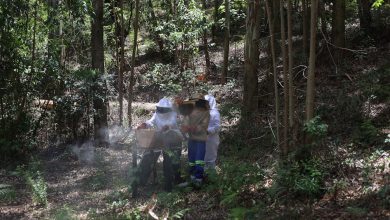With internal displacement at a record high, aid chief backs action call — Global Issues
[ad_1]

Martin Griffiths was speaking at a review of humanitarian efforts to help people uprooted by conflict, climate change or other emergencies.
He echoed concerns that help for the world’s internally displaced isn’t being delivered quickly enough by the United Nations and its partners, as escalating conflicts, large-scale disasters, water scarcity and food insecurity continue to fuel the number of people uprooted within their own countries.
“We need to use the access to communities in partnership with development partners and those who could think of solutions including mediation (and) the political community in that country, to see what those people can tell us of what they want”, said the Humanitarian Affairs chief.
“We should do it together because they will not distinguish between us.”
Humanitarians insist that reforms are needed to help internally displaced people because they suffer the worst health outcomes and the highest mortality rate of any other population group in emergencies.
Falling short
But these changes are not happening quickly enough, according to a new report from UN agency heads and partners known collectively as the Inter-Agency Standing Committee, or IASC.
It underlined that displaced people are the responsibility of affected countries, but when governments are “unable or unwilling” to offer solutions, humanitarians should step in.
But today’s efforts are “too slow to respond” to vulnerable people’s needs and too slow to help them rebuild their lives, the IASC warned, as it highlighted estimates that climate change could push more than 200 million people into displacement by 2050.
Too often the humanitarian system at large overlooks the specific needs of IDPs and “focused more on internal processes than meaningfully engaging the people it aims to help”, said the executive summary of the report, published last week.
Displacement ‘growing dramatically’
In an update to the UN General Assembly on Wednesday, the UN Special Adviser on Solutions to Internal Displacement said new data was due in May covering last year but the problem is growing in complexity, driven largely by climate change and violence.
Displacement due to disaster is growing too and represented a 40 per cent increase in 2022 compared with the previous ten year average, said Robert Piper.
“Almost every country in the world is affected by displacement. Japan is still managing displaced persons from Fukushima. The US from the fires in Hawaii.”
Nigeria’s 4.5 million displaced represent two per cent of Nigeria’s population, Somalia’s 3.9 million IDPs more than 20 per cent, while Syria’s nearly seven million represent more than thirty per cent, he added.
“Despite these numbers, IDPs remain under-represented in these corridors. The issue has no clear home at the UN. Institutionally or inter-governmentally. No treaty, no compact, no Forum”, he noted.
With his Office due to close at the end of next year, Mr. Piper said among the lessons learned from a group of 15 countries suffering protracted displacement was that “how we begin affects profoundly what happens next”.
The long-term displaced want livelihoods but often camps become magnets for services which “generate dependency”.
‘Pivot fast to solutions’
He said early humanitarian response needs to pivot fast to solutions.
But solutions are genuinely difficult for many governments to execute due to political and social sensitivities. True political leadership can make for faster progress, he said, at a local and national level.
He said the UN development system suffers from a “chronic timing challenge” and new ways need to be found to urgently fast track investments much earlier in a crisis.
He said the focus of his team in the time remaining would be to move their pilot programme forward and place 10 million IDPs on a “solutions pathway”.
“We will raise the profile of internally displaced persons across the UN system and in its governing bodies”, he said.
“And I hope we will advance the dialogue on creating a regular forum for this issue in our inter-Governmental architecture, one day.”
[ad_2]
Source link



